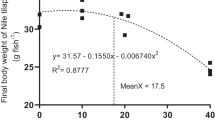Abstract
Anthelmintic treatment (A), feed supplementation (F), anthelmintic and feed supplementation (A + F) or traditional management (Control) was given to 166 pregnant female donkeys in three localities (Holetta, Debre Zeit and Adami Tulu) in Ethiopia during an on-farm study. Treatments started during the last trimester of pregnancy and continued until 6 months after parturition when the foals were weaned. The same treatments were administered to foals once they reached 1 month of age. Live weights of adults and foals were measured throughout the study along with work output of adult donkeys and survival to weaning of the foals. Faecal worm egg counts (FEC) and blood packed cell volumes (PCV) were recorded monthly. When applied alone, anthelmintic treatment (A) or feed supplementation (F) had no significant effect on live weight gain or foal survival. However, when combined, anthelmintic and feed supplementation (A + F) significantly (p < 0.05) improved both live weight gain in adults and foals and foal survival. Workout was not affected by any of the treatments. Treatments A and A+F resulted in a highly significant (p<0.001) reduction in FEC in all three localities during the course of study and for at least 6 months after the last dose of anthelmintic in one of the study areas (Holetta). None of the treatments had any significant effect on PCV. Donkey owners in Ethiopia should be encouraged to adopt both anthelmintic treatment and feed supplementation if they expect tangible benefits in animal performance.
Similar content being viewed by others
Abbreviations
- A:
-
anthelmintic treatment
- A + F:
-
anthelmintic and feed supplementation
- C:
-
control (traditional practice)
- CP:
-
crude protein
- DM:
-
dry matter
- e.p.g.:
-
eggs per gram of faeces
- F:
-
feed supplementation
- FEC:
-
faecal egg count
- ME:
-
metabolizable energy
- PCV:
-
packed cell volume
References
Agajie, T., Tamirat, D., Pearson, R.A. and Temesgen, T., 2000. Socio-economic circumstances of donkey use and management in the rural and urban areas of central parts of Ethiopia. In: D. Smith, T. Agajie and L. More (eds), Proceedings of a Workshop on Promoting Peri-Urban Livelihoods Through Better Donkey Welfare, October 2000, Debre Zeit, Ethiopia, 16–28
SAS, 1988. SAS/STAT User's Guide, (SAS Institute Inc., Cary, 37–56
Blood, D. and Radostits, O.M., 1989. Veterinary Medicine. A Textbook of the Diseases of Cattle, Sheep, Pigs, Goats and Horses, (Bailliere Tindall, London), 67
Coop, R.L. and Kyriazakis, I., 1999. Nutrition-parasite interaction. Veterinary Parasitology, 84, 187–204
Coop, R.L. and Kyriazakis, I., 2001. Influence of host nutrition on the development and consequences of nematode parasitism in ruminants. Trends in Parasitology, 17, 325–330
Feseha, G., Alemu, G.W., Firew, K., Abule, I. and Ketema, Y., 1997. An overview of donkey utilización and management in Ethiopia. In: A TNESA Workshop on Improving Donkey UtilizaciÓN and Management, 5–9 May 1997, Debre Zeit, Ethiopia, 6–13
Fesseha, G., 1993. Use of equines in Ethiopia. In: Proceedings of the Fourth National Livestock Improvement Conference, (Addis Ababa, 13–15 November 1991), 51–58
Fowler, J., 1989. Medical. In: E. Svendsen (ed.), The Professional Handbook of the Donkey, (The Donkey Sanctuary, Sidmouth), 101–109
Kassai, T., 1999. Veterinary Helminthology, (Reed Educational and Professional Publishing, London), 156–159
Matthee, S., Krecek, R.C., Milne, S.A., Boshoff, M. and Guthrie, A.J., 2002. Impact of management interventions on helminth levels, and body and blood measurements in working donkeys in South Africa. Veterinary Parasitology, 107, 103–113
Mekonnen, T., 1989. Rural transport systems in Ethiopia. In: Proceedings of a National Workshop on Food Strategies for Ethiopia, (Alemaya University of Agriculture, 8–12 December 1986), 13–19
Mulugeta, W., 1986. Transport and rural development. In: Proceedings of a National Workshop on Food Strategies for Ethiopia, (Alemaya University of Agriculture, 8–12 December 1986), 157–182
Pearson, R.A., Dijkman, J.T., Krecek, R.C. and Wright, P., 1998. Effect of density and weight of load on the energy cost of carrying loads by donkeys and ponies. Tropical Animal Health and Production, 30, 67–78
Poppi, D.P., 1986. Nitrogen transactions in the digestive tract of lambs exposed to the internal parasite Trichostrongylus colubriformis. British Journal of Nutrition, 55, 543–602
Prasad, V., Marovanidze, K. and Nyathi, P., 1991. The use of donkeys as draught animals relative to bovines in the communal farming sector of Zimbabwe. In: D. Fielding and R.A. Pearson (ed.), Donkeys, Mules and Horses in Tropical Agricultural Development, (CTVM, University of Edinburgh), 231–239
Smith, D.G., Agajie, T. and More, L., 2000. Alleviating Poverty in Peri-urban Ethiopia by Improving the Health, Welfare and Management of Donkeys, (CTVM, Edinburgh)
Soulsby, E., 1982. Helminths, Arthropods and Protozoa of Domestic Animals, 7th edn, (Bailliere Tindall, London), 234–239
Sykes, A.R. and Coop, R.L., 2001. Interaction between nutrition and gastrointestinal parasitism in sheep. New Zealand Veterinary Journal, 49, 222–226
Wells, D., Krecek, R.C., Wells, M., Guthrie, A.J. and Lourens, J.C., 1998. Helminth levels of working donkeys kept under different management systems in the Moretele 1 district of the North-West Province, South Africa. Veterinary Parasitology, 77, 163–177
Wilson, R.T., 1991. Equines in Ethiopia. In: D. Fielding and R.A. Pearson (eds), Donkeys, Mules and Horses in Tropical Agricultural Development, (CTVM, University of Edinburgh), 33–47
Yu, F., Bruce, L., Calder, A., Milne, E., Coop, R.L., Jackson, F. and MacRae, J., 2000. Subclinical infection with the nematode Trichostrongylus colubriformis increases gastrointestinal tract leucine metabolism and reduces availability of leucine for other tissues. Journal of Animal Science, 78, 380–390
Author information
Authors and Affiliations
Corresponding author
Rights and permissions
About this article
Cite this article
Mengistu, A., Smith, D.G., Yoseph, S. et al. The Effect of Providing Feed Supplementation and Anthelmintic to Donkeys during Late Pregnancy and Lactation on Live Weight and Survival of Dams and Their Foals in Central Ethiopia. Trop Anim Health Prod 37 (Suppl 1), 21–33 (2005). https://doi.org/10.1007/s11250-005-9003-4
Issue Date:
DOI: https://doi.org/10.1007/s11250-005-9003-4




